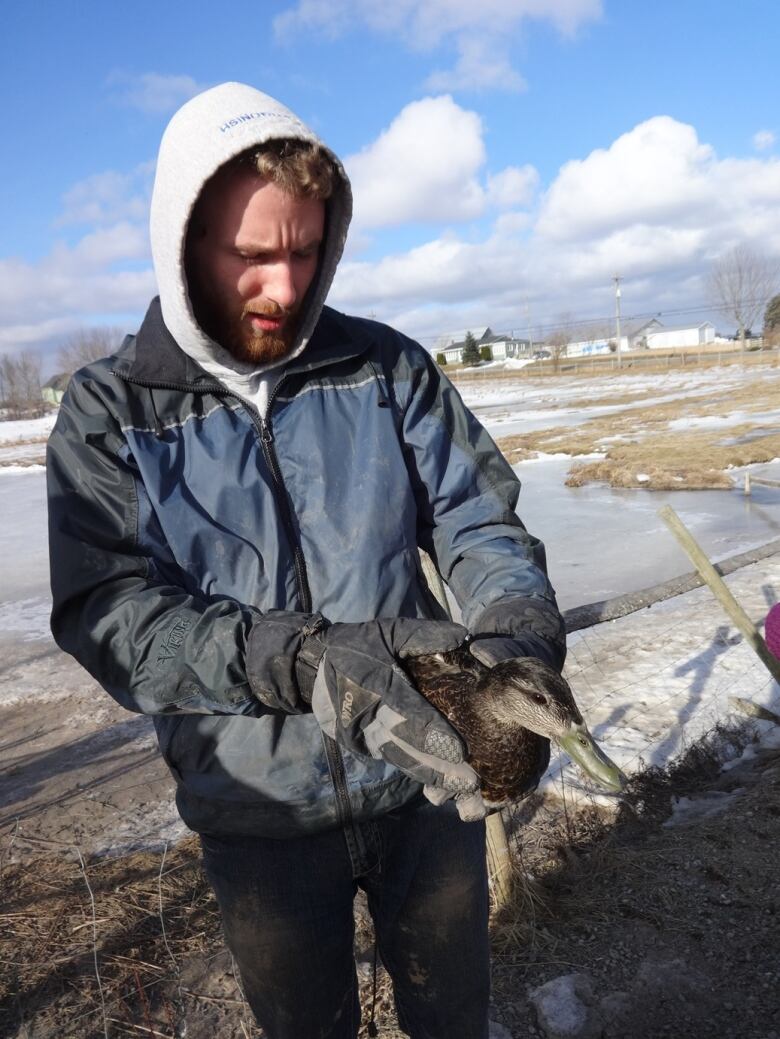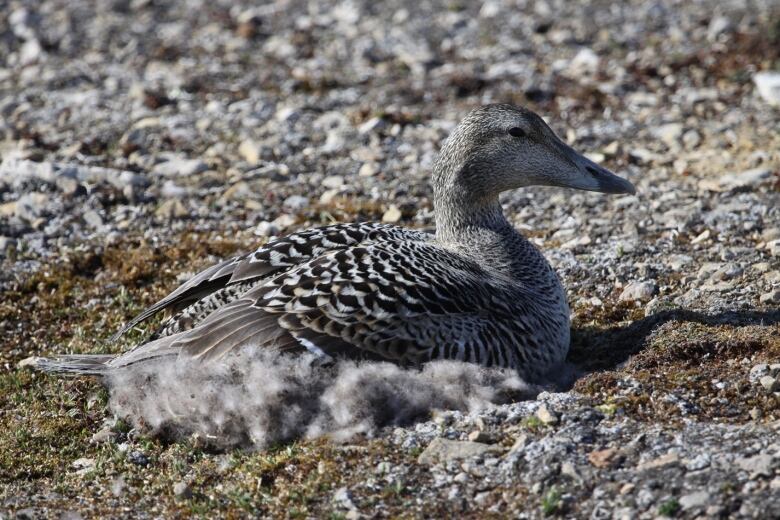Waterfowl in Atlantic Canada consume plastics and metals, study finds
54% of the mallards studied contained debris the bird may have mistook for food

Researchers collected andexamined 148 American black ducks, mallards and common eidersfrom across Atlantic Canada.
Half of the mallards contained debris.Plastic or metal was found in 9.2 per cent of the American black ducks. The eiders, which dive to feed on mollusks on the ocean floor, had the lowest occurrenceat 4.2 per cent.
"It's fairly common in marine birds, but we really didn't expect to see this in ducks," said researcherMark Mallory, Canada Research Chair in coastal wetland ecosystems and associate professor at Acadia. "We're talking about species that are being harvested by people, both indigenous people and sport hunters."
Metals unexpected
Mallory says the "bigger surprise" was discovering pieces of metalin addition to the pieces of plastic.
The researchers determined the small pieces found in the birds' gizzards werenot lead or steelshot, but it's unclearwhere themetalcame from.
"One of the pieces looks like a tiny bit of a metal lid. They're aluminum that's all we can tell. There were also types of braided nylon fishing line," he says.

Mallory says master's student Matthew English initially discovered pieces of plastic while dissecting ducks to determine how their condition compared to waterfowl in other parts of the country.
He and Mallory expanded the work in partnership with Environment Canada, the NovaScotiaDepartment of Natural Resources and Ducks Unlimited and gathered samples from across Atlantic Canada. They collected waterfowlfrom Amherst to Yarmouth, around the Bay of Fundy, as well as a few samples from Prince Edward Islandand Newfoundland.
The appearance of plastic in marine birds and mammalshas been documented for two decades.Earlier this year, a necropsy found a Pygmy sperm whale that washed ashore on McNab's Island died with a belly full of plastic.
Scientists have documentedhuge amounts of plastics in the world's oceans including a massive garbage patch in the Pacific.
Consumedplastichasbeen known to cause damage to some seabirds, butMallory says the dissections didn't find any internal tearing or damage to indicate the debris harmed the waterfowl.
Mistaken for food
"The good news is that the bits were small," says Mallory, who says there has been very little research on the presence of plastics in species that live in freshwater ecosystems.
The study, which was published inMarine Pollution Bulletin, says the waterfowl could have consumed the pollution while breeding in freshwater areas or during the fall migration, but it says the more likely origin are the coastal areas where the birds spend the winter.
"They're picking up bits of garbage that are probably in the tidal areas, exposed in the tidal areas, or lapping right up along the shore. Or they could just be floating in the ocean and they could mistake that for some kind of small invertebrate they were planning on eating or maybe a seed," says Mallory.
He says the mallards and black ducks breed around Nova Scotia in agricultural field and at the edges of forests and that it's unlikely they picked up the garbage in more remote areas.
Mallory says the study signals that pollution is becoming a more pervasive problem for birds in Atlantic Canada. He says there may need to be more screening to determine the extent and severity of the problem.
He recommends people report dead birdsto federal or provincial wildlife officialsso that monitoring can continue.












_(720p).jpg)


 OFFICIAL HD MUSIC VIDEO.jpg)
.jpg)



























































































